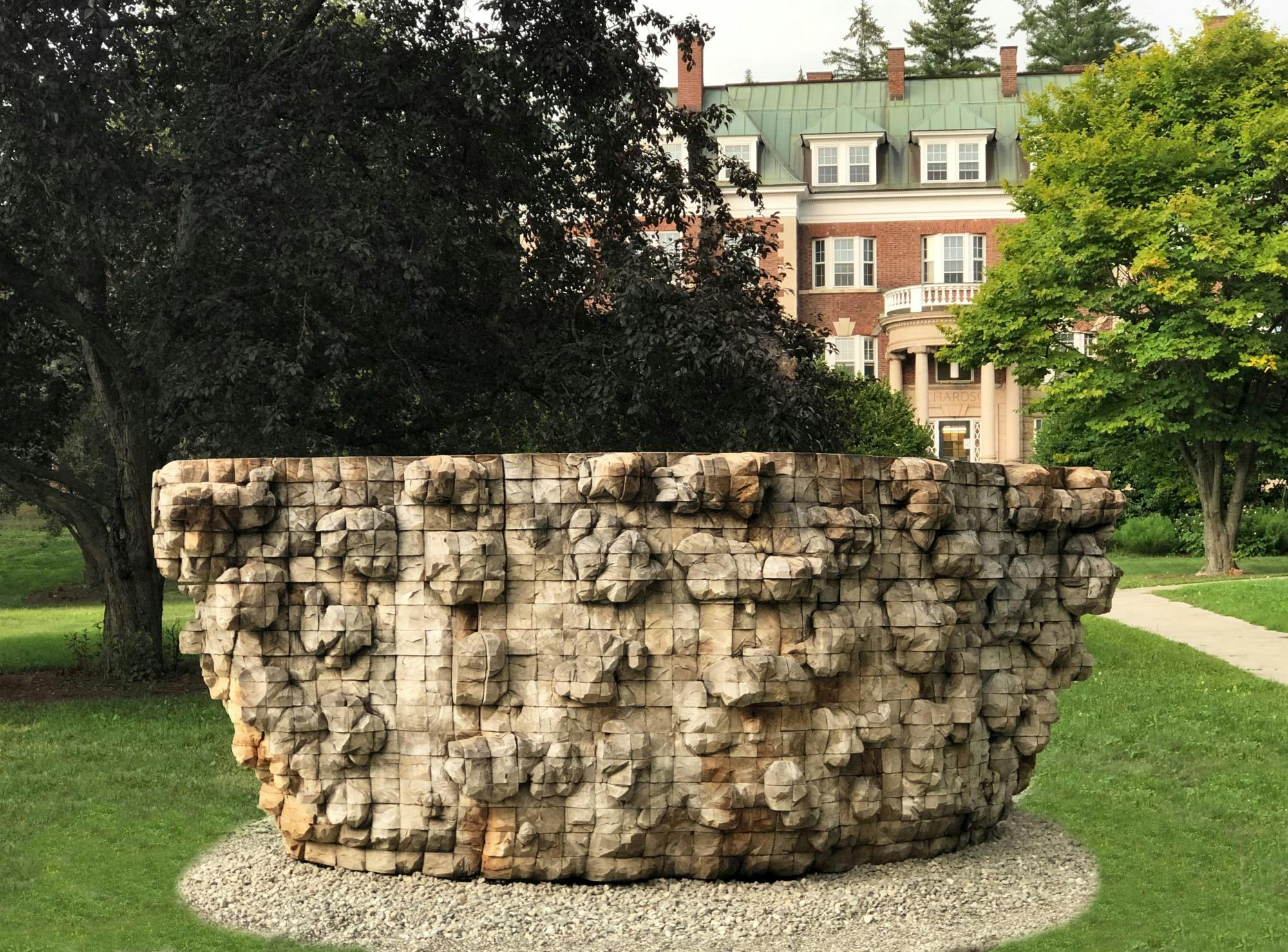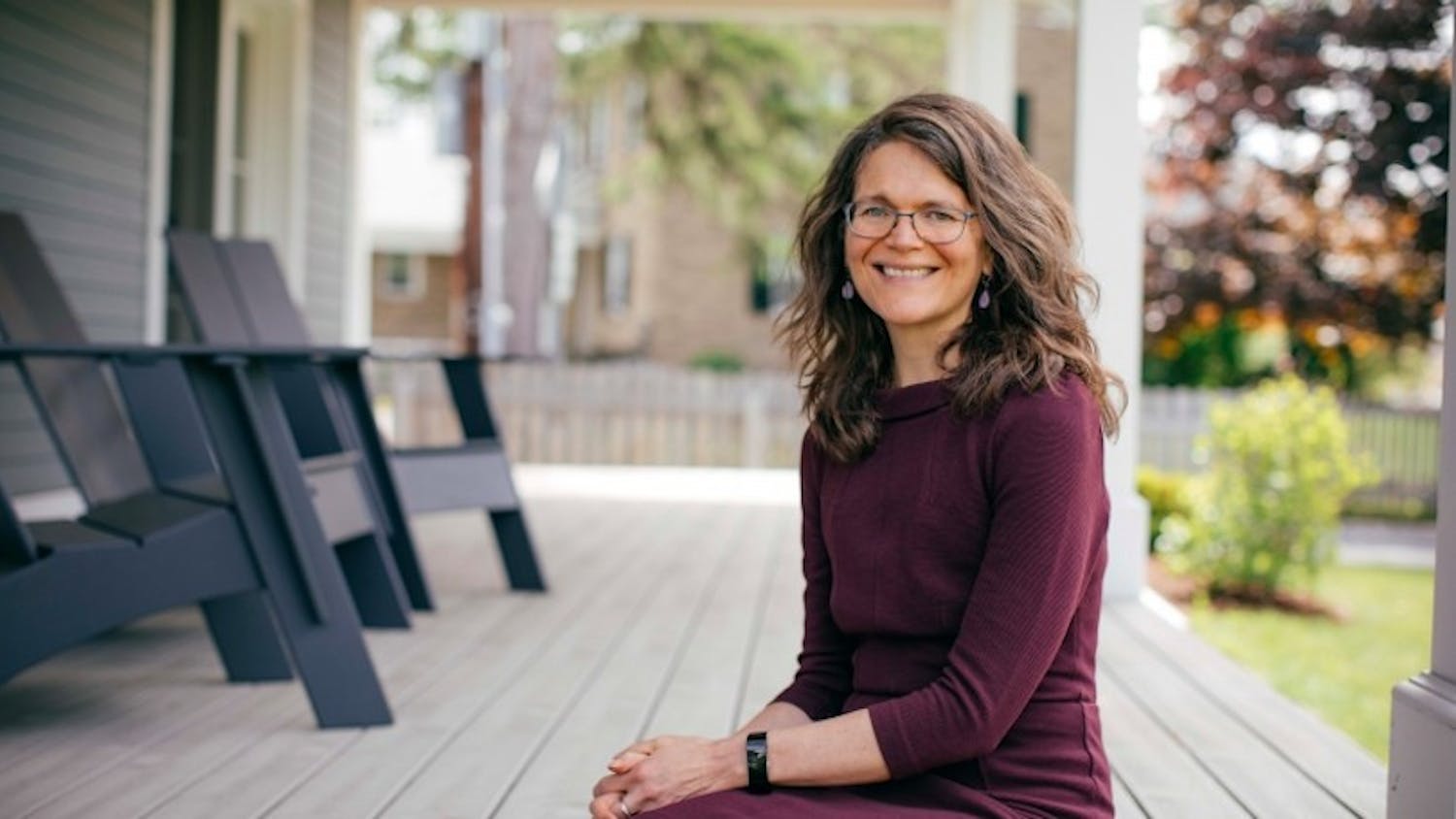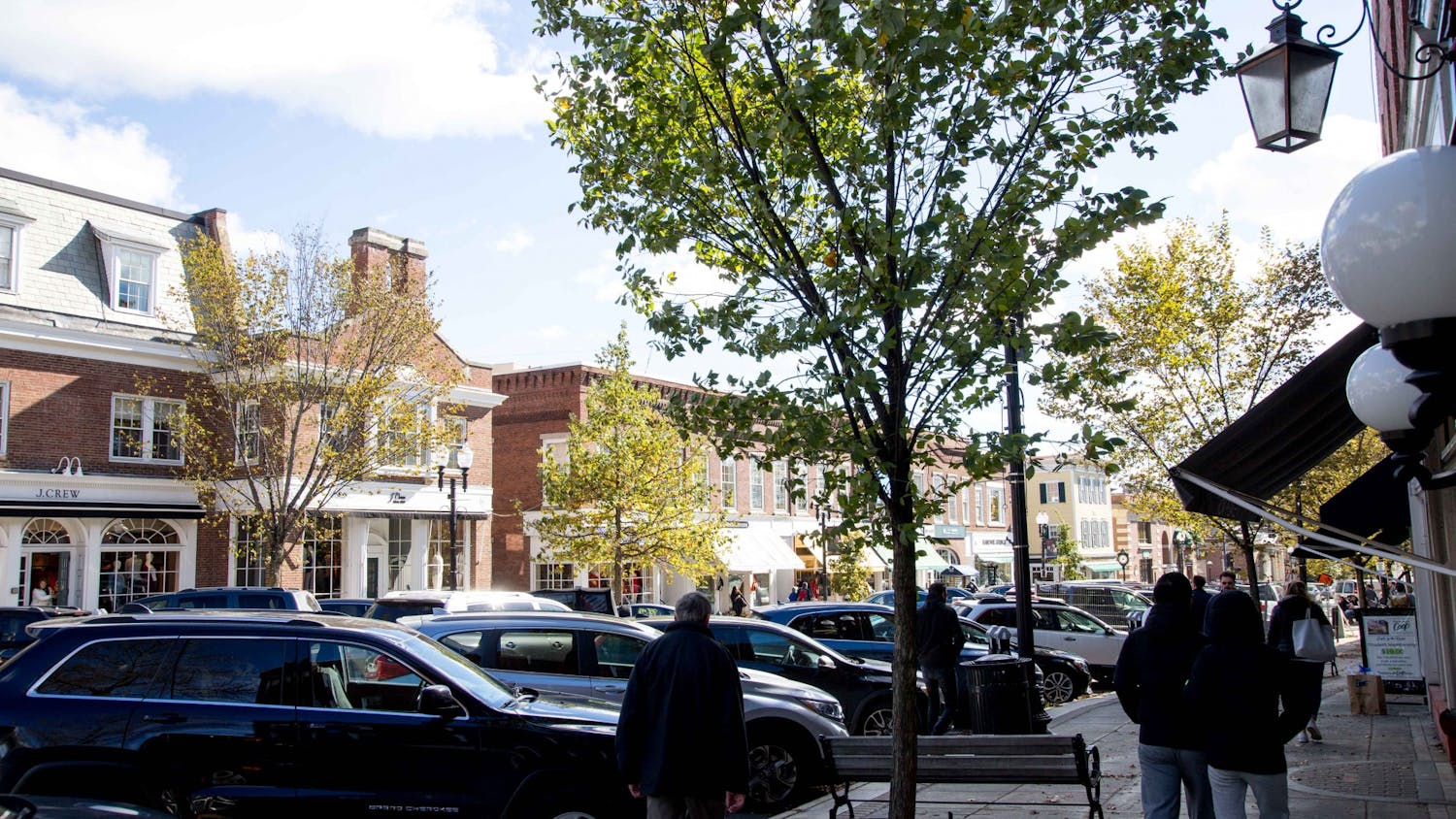On Aug. 19, Brooklyn-based sculptor Ursula von Rydingsvard's “Wide Babelki Bowl” — a large cedar sculpture resembling “babelki,” or knots on a sweater — became the newest addition to Dartmouth’s collection of public art installations.
The sculpture, which was originally installed on a private property in Woodstock, Vermont, was donated to the College by Jens and Margarit Jacobs and can now be found on display near Rollins Chapel.
Von Rydingsvard, who visited Dartmouth and the Hood Museum of Art in the 1990s, chose Dartmouth as the sculpture’s new location because she wanted the artwork to be close to its original Woodstock location and in a space where people would interact with and learn from it.
Associate curator of global contemporary art Jessica Hong said that the sculpture’s connection to von Rydingsvard’s personal history makes it an expressive and emotional piece of artwork. According to Hong, “Wide Babelki Bowl” can be viewed as a vessel that holds the artist’s personal experiences, which she has interpreted as an allegory for Dartmouth’s campus.
“It is holding these memories, histories, thoughts or ideas,” she said, “which arguably parallels the academic environment as this kind of active vessel that brings together all of the intellectual life throughout campus.”
Since the 1970s, von Rydingsvard has been a prominent name in the sculpting community for her large-scale wooden sculptures. Most of the titles of von Rydingsvard’s pieces use the Polish language, in reference to her heritage. Born into a long lineage of farmers and having spent her early years living in post-war refugee camps throughout Germany with her family, von Rydingsvard draws much of her inspiration from her personal history.
“Babelki,” according to Hong, refers to the popcorn stitches or the small balls of wool that get knit onto sweaters — which are reminiscent of the clothes von Rydingsvard wore as a child.
Hong said that “Wide Babelki Bowl” showcases von Rydingsvard’s ability to transform wood into art that is at once monumental, abstract and deeply personal. While at first spectators observe the physical magnitude of the sculpture, its history and background imbue it with a layer of intimacy.
“The themes that she's exploring, even just the materials that she's using, [‘Wide Babelki Bowl’] is really quite distinct from the other public artworks in our collection,” she said.
According to Hong, the Hood Museum collaborated with von Rydingsvard to determine the work’s place on campus. While in Vermont, the piece was originally positioned on a platform, where Hong said it resembled a monument and failed to unite with the surrounding landscape. As a result, Hong said the sculpture lacked the organic and emotional nature of the sculpture that von Rydingsvard hoped to emphasize.
However, near Rollins Chapel, Hong said the work now complements its architectural surroundings and seems to blend with its environment. She added that while Dartmouth is home to a distinguished collection of public art, von Rydingsvard’s piece is unique in that it resembles a geological formation and thus interplays with the College’s natural surroundings.
Han Nazarbayev ’23 echoed Hong’s sentiments, saying that the cedar sculpture merges seamlessly with Dartmouth's existing landscape.
“Compared to other artworks, this piece focuses on the surrounding of its environment,” he said. “Since it is made out of wood, there is a juxtaposition to the trees encompassing it. To me, there is a silent communication to be found between what is living and what is not, and the connection is the artwork's material.”
Hong said that she is looking forward to witnessing the community’s reaction to the new addition as the seasons change.
“Cedar is an organic material and not meant to be forever,” Hong said. “The work itself will evolve and our perception of the work will evolve as it continues to become more part of our social, cultural, physical landscape.”
Campus engagement coordinator Isadora Italia emphasized that as many students return to campus this fall, she hopes that people will safely engage with public art, given that it is outdoors.
As courses at the College remain largely remote, Italia added that the Hood Museum is finding alternative ways to make Dartmouth’s art collection more accessible, such as a “digital escape room game that will have people exploring the public art sculptures [on campus].” She also expressed hope that students living off campus will take advantage of the Hood Museum’s virtual public art collection.
“I encourage students or really anyone encountering a work of art to really take a moment to just make their way around it,” she said. “Think about the material. Think about the scale. Think about where it is placed and think about your own reaction to it and how it influences your experience with the space or with campus.”




